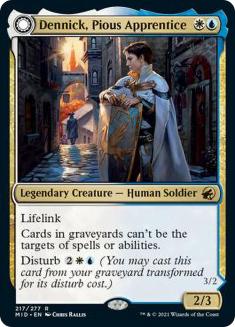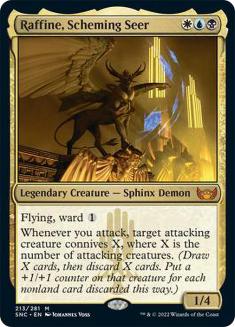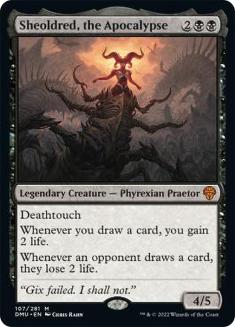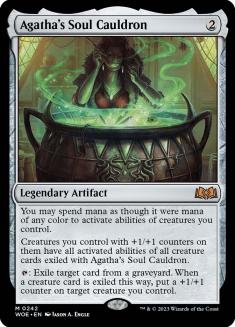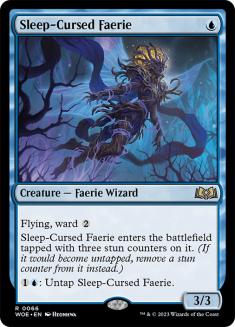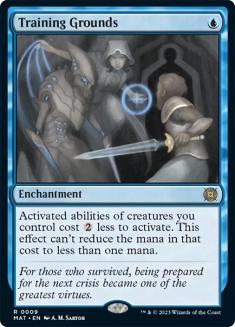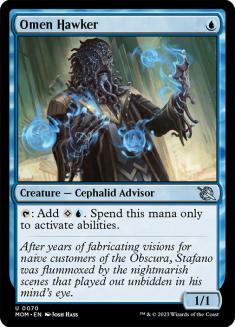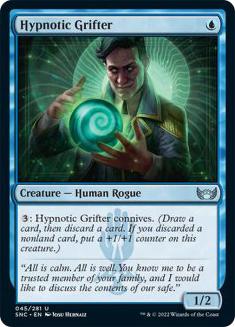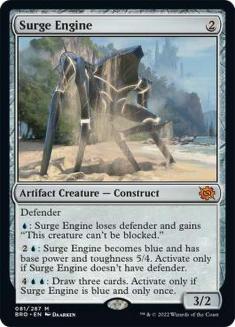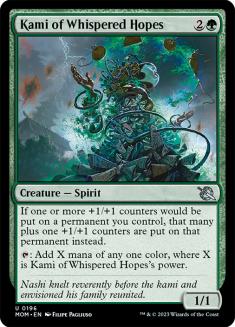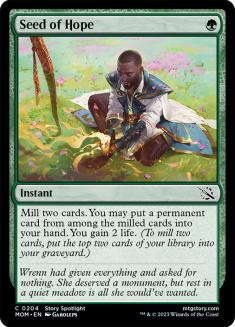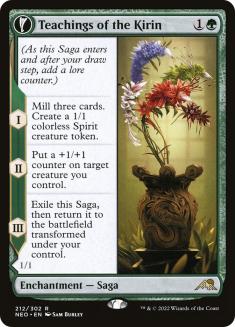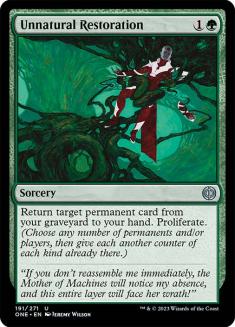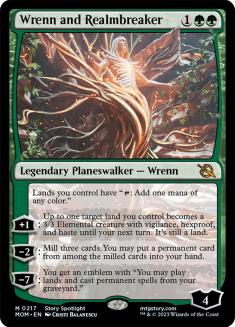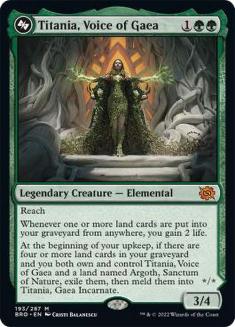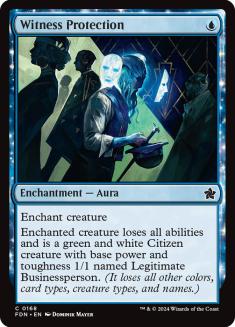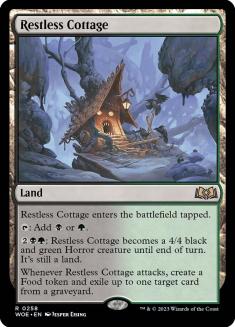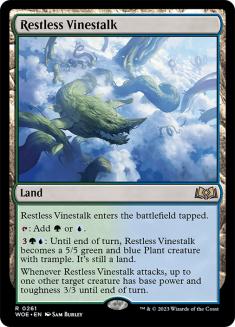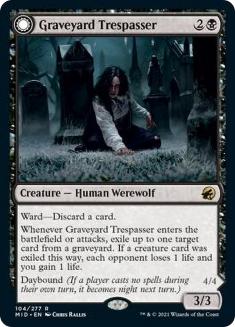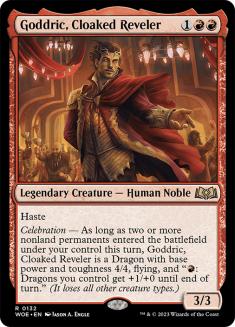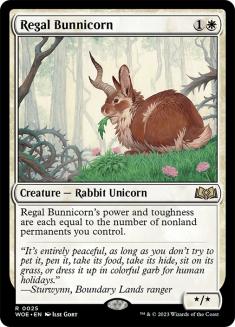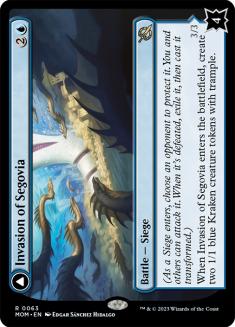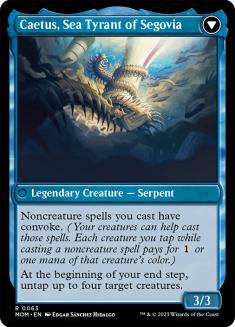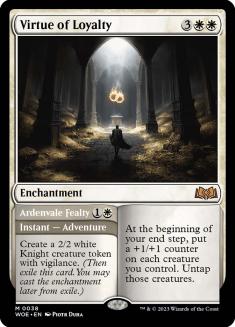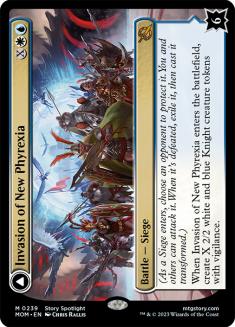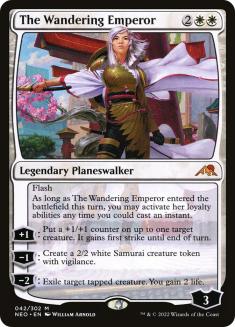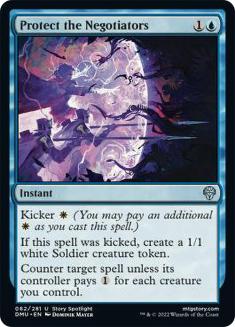MTG World Championship XXIX last month in Las Vegas was a showcase of Standard in this new era, with dozens of the game’s best players (and some stragglers like me) battling it out for the ultimate title.
Wilds of Eldraine Standard looked refreshingly balanced and diverse with no dominant strategy. Though the finals was an Esper mirror of sorts, the Esper Legends deck from champion Jean-Emmanuel Depraz and Kazune Kosaka’s Esper Midrange deck look and feel distinct despite sharing some flagship cards. Even taken together, these Esper variants amounted to less than 30% of the tournament – a big drop from the eye-watering 70% who placed their bet on Raffine and friends at last year’s World Championship.
The other popular and successful decks were known quantities but spanned the entire spectrum of archetypes – Mono-Red Aggro and Mono-White Aggro on one end, Domain Ramp and blue control on the other, and Golgari Midrange smack in the middle as always.
Some brave souls brought decks that were totally off-the-radar to the big stage. Frank Karsten highlighted eight “spicy” lists before the rounds started. I’ve chosen five for further analysis. Let’s get started!
Mono-Blue Cauldron
Creatures (21)
- 4 Hypnotic Grifter
- 4 Surge Engine
- 4 Omen Hawker
- 4 Rona, Herald of Invasion
- 1 Realm-Scorcher Hellkite
- 4 Sleep-Cursed Faerie
Lands (19)
Spells (20)

Agatha’s Soul Cauldron is catnip for combo enthusiasts, spawning epic experiments in every format from Standard through Vintage. Here you don’t have the easy duets with Griselbrand or Phyrexian Devourer – you have to master more complicated recipes to get your stew on.
Sleep-Cursed Faerie is the main combo piece for Cauldron as a way to generate infinite mana with any ability that lets you tap a creature for two or more mana. It’s also a fine backup plan in its own right – Turn 1 Sleep-Cursed Faerie backed up by Make Disappear and friends is the ideal start for an entirely different Standard deck!
Ward 2 makes this the ideal place to put your Cauldron counters and the long list of abilities that ideally come with them.
Omen Hawker ticks the combo box as a shockingly cheap way to tap for two mana; Training Grounds lets this turn a profit with each cycle, netting infinite mana.
Both Omen Hawker and especially Training Grounds also turbocharge the other cheap creatures with useful abilities that you plan to toss into the Cauldron. Hypnotic Grifter is unimpressive on its own, but if connive costs just one mana instead of three, you can suddenly tear through your deck in search of missing pieces. Surge Engine is no Figure of Destiny, but a Surge Engine with a two-mana discount on those abilities is the best Figure of Destiny you could ask for.
The full Cauldron combo requires so many moving parts that it looks like a nonstarter. The key here is that, with other combo enablers and more ways to fit these pieces together, you’re always doing something, even if you’re not doing ‘the thing’.
Simic Cauldron
Alexey Paulot was a heartbreaking tiebreaker situation away from stirring the Soul Cauldron on Sunday with an even more ambitious Simic list.
Creatures (17)
- 4 Fallaji Archaeologist
- 4 Kami of Whispered Hopes
- 4 Rona, Herald of Invasion
- 1 Realm-Scorcher Hellkite
- 4 Sleep-Cursed Faerie
Planeswalkers (4)
Lands (22)
Spells (17)

Kami of Whispered Hopes is an intriguing combo card in its own right that finally finds its purpose here. The Hardened Scales effect is a nice buff for Cauldron’s counters, but there’s a lot more to come. That goal of tapping for two or more mana is trivial with Kami – it has three power if you use Cauldron to boost it, and Cauldron can also put Kami’s mana ability on a creature like Sleep-Cursed Faerie that naturally has high power.
Green gets its own take on Sleight of Hand in Seed of Hope – when you care about stocking your graveyard and you have very few nonpermanent cards in your deck, mostly more copies of Seed of Hope, this is an instant-speed upgrade.
Green offers some more quirky enablers as well. Teachings of the Kirin rises above its claim to fame as the worst card in Selesnya Enchantments: it makes two bodies for Cauldron, adds counters, and fills the graveyard, all for a low price. Unnatural Restoration gets back a milled Cauldron, and proliferate is a meaningful bonus in this shell.
Wrenn and Realmbreaker, while an eye-catching planeswalker, turned out to be less than the sum of its parts, but Simic Cauldron uses enough of those parts to offer a glimpse of its potential. The -2 ability is yet another way to dig for the all-important Cauldron, while the ultimate ensures your combo pieces will show up and stick around. The +1 ability is crucial too – a creature with hexproof can pick up counters from Cauldron and start the combo through any amount of removal.
How about some strange sideboard pivots? Titania, Voice of Gaea offers good stats and a dream to chase when your graveyard is well-stocked already. Slogurk is a more natural fit with all the activated abilities, counters, and graveyard silliness going on. Paulot said it was impressive for him – the rest of us just have to figure out how!
Two of the most popular decks in Standard are Esper variants that have maindeck hate for you almost by accident. Dennick, Pious Apprentice is a cornerstone of both Esper Legends and Esper Midrange that stops you from cooking with Agatha’s Soul Cauldron, but Legitimate Businessperson is much more open-minded. Simic is generally the worst colour pair for creature removal, so you have to dig deep for answers like this – you can’t just load up on Lithomantic Barrage and call it a day.
Dimir Faeries
Creatures (15)
- 2 Graveyard Trespasser
- 3 Sheoldred, the Apocalypse
- 4 Faerie Mastermind
- 2 Picklock Prankster
- 4 Sleep-Cursed Faerie
Planeswalkers (2)
Lands (26)
Spells (17)

At this point, World Champion is the only honour that Shota Yasooka hasn’t claimed – and he’s come as close as anyone can. All the while, he has marched to the beat of his own drum, preparing mostly alone and playing decks that nobody else could imagine, let alone pilot. Many fans over the years have picked up whatever his latest creation is, only to discover the hard way that they are not Shota.
Dimir Faeries was a bold choice for this tournament in its own right. After a brief breakout on Magic Online (MTGO), its momentum stalled once players realized that its strength against anyone relying on expensive spells wasn’t worth the struggle against the faster, proactive decks like Mono-Red Aggro or the triumphant Esper Legends. Sultai Faeries with a creature-land as the only green card? That’s a Shota deck!
That part makes some sense, though. A small splash like that has a relatively low cost thanks to the fixing on offer in Standard, and the upside is immense. Tempo decks like this need hard-hitting threats that let you apply pressure quickly before your control over the game slips, and Restless Cottage fills that role without fighting for slots with the cards that give you that control in the first place.
It’s less obvious to me that this is even the right creature-land for the job once you take this route – Restless Vinestalk is very appealing too! It lacks a home right now, since the ramp deck of choice needs a whole plane of Triomes before anything else, but I expect it to be a force in Standard before long.
Creature types and other themes present a recurring dilemma. How much do you lean into the theme at the expense of the generically good cards? The Faeries theme is appealing, but is it better than the Dimir Midrange shell that throttled the format for months before Wilds of Eldraine?
It’s easy to split the difference when those cards happen to play well with your theme. From their debut in Lorwyn fifteen years ago to their return here, Faeries have always enjoyed playing tricks on the opponent’s turn – a play pattern that sounds great to Graveyard Trespasser and other Werewolves. Sheoldred, the Apocalypse is less ‘on-theme’, but Shota can foster good conditions for it, drawing out removal and creating a window of opportunity with his cheaper and more flexible threats.
These cards also compensate for the weaknesses of your main theme. The Faeries package is exceptional against anything slower and bigger, but is vulnerable against aggro. Trespasser and Sheoldred can do the heavy lifting there when supported with Cut Down and Go for the Throat.
Rakdos Sacrifice
Creatures (17)
- 4 Bloodtithe Harvester
- 4 Voldaren Epicure
- 2 Razorlash Transmogrant
- 2 Vraan, Executioner Thane
- 2 Syr Ginger, the Meal Ender
- 3 Goddric, Cloaked Reveler
Lands (22)
Spells (21)

Chris Ferber and Benton Madsen were the only members of Team Misfits to register Rakdos Sacrifice. Their list has the hallmarks of successful Rakdos Sacrifice decks from Standard and Pioneer as well as Historic and Alchemy, but also features some recent additions.
Syr Ginger, the Meal Ender is a shoo-in – a hard-hitting two-drop that benefits from all the many game actions you planned on taking anyway and digs for other payoffs. The anti-planeswalker power-up isn’t a big part of its appeal, but it makes the card much better against The Wandering Emperor.
Goddric, Cloaked Reveler competes with many other strong three-drops in aggressive red decks, yet stands out in Rakdos Sacrifice. It’s easy to note at a glance that Voldaren Epicure and Bloodtithe Harvester trigger celebration, but Oni-Cult Anvil and Urabrask’s Forge can tick that box too. Turn 1 Kumano Faces Kakkazan exiles itself and comes back on Turn 3, allowing Goddric to attack as a 4/4 Dragon right away.
Goddric doesn’t contribute to the web of artifact and sacrifice synergies directly – but that’s the point! If you don’t have the resources to set up or defend some elaborate engine, you want a blunt instrument like Goddric as a Plan B. Decks like this can often take a lot of game actions without really doing anything. If you’re attacking with an enhanced Goddric, you don’t need to do much else.
Goddric creates a tricky dynamic with opponents’ removal. The rest of the deck laughs off Go for the Throat, this format’s Doom Blade of choice, and a large threat with haste is good on either side of Sunfall. Opponents want to replace Go for the Throat with anything else, but an unanswered Goddric can easily run away with the game. There’s no ‘good’ answer to that problem, other than hoping you don’t get stuck with otherwise dead removal at the wrong time, and even World Championship competitors struggle to find that balance.
Azorius Tokens
Creatures (8)
Planeswalkers (4)
Lands (25)
Spells (23)

Finally, Canadian legend Alexander Hayne won my heart with his unique Azorius Tokens deck that blends the best elements of the white midrange decks with one of the strongest build-arounds from Wilds of Eldraine.
The white aggro decks are flirting with Regal Bunnicorn, even though it’s not a Soldier or Human or whatever else they claim to be looking for, but it finds its perfect match in the quirky Invasion of Segovia. Turn 2 Bunnicorn into Turn 3 Invasion of Segovia lets your 4/4 Bunnicorn threaten to transform Invasion right away, giving you nine power across enough creatures to convoke out even more spells this turn.
Virtue of Loyalty is at its absolute best here, boosting your wide battlefield and keeping that convoke chain going. Invasion of New Phyrexia gives you a big payoff for a transformed Invasion of Segovia and is also a fine mid-game mana sink to press your advantage.
This setup lets other Standard hits shine too. The Wandering Emperor needs no help to perform well, but a continuous token generator with flash is exactly what this deck needs. Protect the Negotiators is more reliable in a dedicated Tokens deck than in Soldiers, and loading up on Protect and Make Disappear lets your slower midrange strategy fight over finishers from decks like Domain Ramp even deep into the game.
After preparing for and competing (though not for very long…) in this Standard format, I’m keen to play it again – but there are barely any opportunities to do that! That’s a good problem to have but one I hope is addressed soon. Wizards of the Coast (WotC) has made it clear that reviving Standard at the lower rungs of competitive play is a priority for them, and the addition of large Standard tournaments at future MagicCons is a welcome first step there. I hope I’ll be busy enough in Chicago at Pro Tour Murders at Karlov Manor to delay taking part in that – but I’m glad the option exists!


